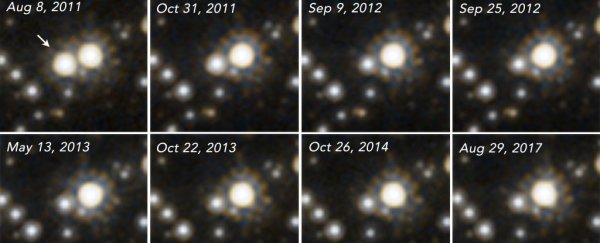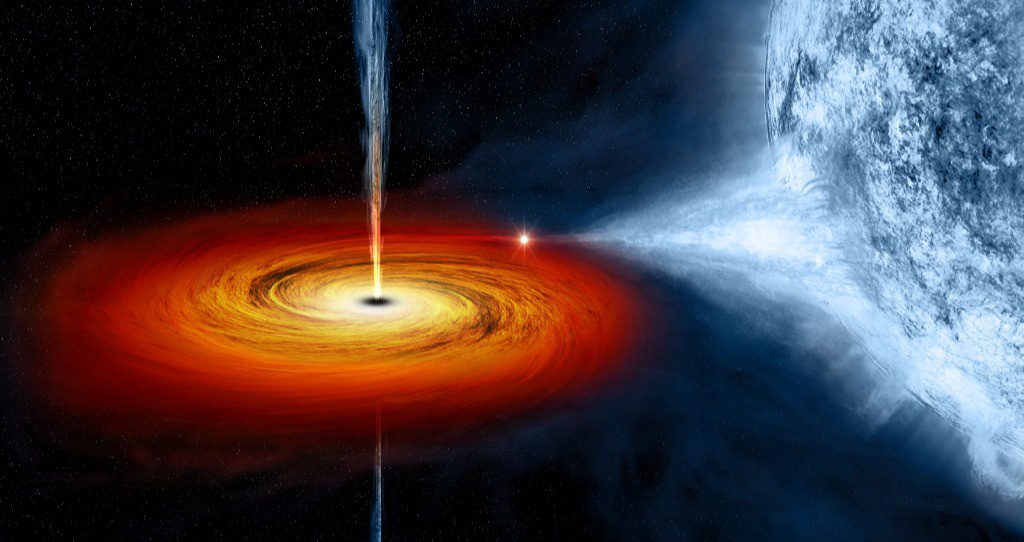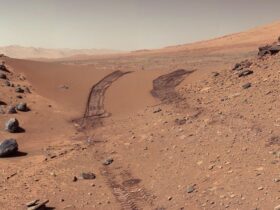According to best calculations, there might be 10 million to 1 billion stellar-mass black holes floating calmly and silently around the galaxy.
When it comes to counting them, there’s just one problem: they’re virtually undetectable until they manage to catch some passing material in their gravitational field.
However, being invisible does not imply being undetected.
An international team of scientists has discovered alone, dormant black hole just under 5,200 light-years distant for the first time.
Their finding has not yet been peer-reviewed, has been posted to the preprint service arXiv.
How Do They Manage to Catch Invisible Black Holes?
Because scientists don’t own the instruments to explore a black hole directly, they must instead examine its impact on the space surrounding it.
That impact is gravitational for a dormant black hole. Because a black hole’s gravitational field is so strong, any light that passes through it warps and bends.
So, when something unseen amplified the light of a faraway star, causing it to seem unnaturally brighter, scientists understood it was most likely passing through a gravitational field.
This is known as gravitational microlensing, and science has utilized it to detect tiny, faint objects that would otherwise be too difficult to see with our telescopes.
However, this is the first time we’ve witnessed a solitary black hole.

Astronomical team headed by Space Telescope Science Institute’s Kailash Sahu added:
“We announce the first unequivocal observation and mass measurement of an isolated stellar-mass black hole.”
Up to 2017, the Hubble Space Telescope was used to observe the area at eight different times.
Armed with that information, Sahu and his colleagues began crunching figures and discovered that the best match for the data was a black hole, not a star.
They were able to obtain measurements of the black hole as well.
The team was able to compute the mass and speed of the distant star by observing fluctuations in its brightness.
They discovered a black hole with a mass of around 7.1 times the Sun.
As a result, its event horizon would be just 42 kilometers, 26 miles broad.
Take the time to admire that.
By examining the shifting light of a more distant star, scientists were able to discover an unseen object smaller than a tenth the length of the Grand Canyon from almost 5,000 light-years away. That’s insanely cool.
And here’s where things become even more enjoyable.
The astronomers determined the object’s speed across the Milky Way to be 45 kilometers (28 miles) per second. As a result, it is a runaway black hole rather than a regular black hole.
Its predecessor starburst as a supernova was most likely flung into space.
Natal Kick Pheonomenon
If such a supernova explosion is asymmetrical, the unequal power might knock the star’s collapsed core out into space, a phenomenon known as a natal kick.
We’ve seen these celebrities before: Two examples are the white dwarf LP 40-365 and the pulsar PSR J0002+6216.
According to a 2019 research, there might be millions of natally kicked black holes flying across the Milky Way at incredible speeds.
It would be incredible if MOA-11-191/OGLE-11-0462 were one of them.
The item is likely traveling through a densely packed area of space. The researchers want to use sensitive X-ray telescopes in the future to see whether the suspected black hole is absorbing material from the interstellar medium.
Furthermore, future technologies may discover even more isolated star mass black holes.
Once a population has been found and analyzed, we will utilize that information to understand more about MOA-11-191/OGLE-11-0462 and the black holes that populate the Milky Way in general.
Source: ScienceAlert












Leave a Reply